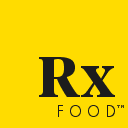Types of Fats: Saturated Fats + Trans fats = Unhealthy Fats; Monounsaturated and Polyunsaturated (omega 3 and 6) = Healthy Fats
How do we use fats: Provide energy, important for growth and skin integrity, cell structure, and also aides in the absorption of fat soluble vitamins (vitamins A, D, E, and K).
How much fat to eat: Consume 20-35% of total calories from fat daily
If you eat too much: Weight gain and increase risk of chronic diseases such as obesity, diabetes, cardiovascular disease and cancer.
If you eat too little: Fatigues, risk of chronic diseases as fats are essential for several processes in the body and deficiency of fat soluble vitamins
Best Sources: Mono and Poly unsaturated fat sources like avocados, nuts, olive oil, canola oil and fatty fish
Minimize: saturated and trans fats from sources such as red meat, butter, fried foods and baked good.
How much to eat?
General recommendations for those over the age of 18 years are to consume 20-35% of total calories from fat. There is no recommendation for the amount of grams per day that should be consumed. Our bodies need fat in our diet because it is a main source of energy, important for growth and skin integrity, cell structure, and also aides in the absorption of fat soluble vitamins (vitamins A, D, E, and K). Just like with carbohydrates and protein, the quality of fats consumed are an important consideration.
Types of fats– healthy vs unhealthy, omega 3 & 6, etc
Not all fats are bad. In fact, some types of fats are considered to be beneficial to our health. There are four main types of fats: monounsaturated fats, polyunsaturated fats, saturated fats and trans fats. The unsaturated fats are the fats that we want to consume more of because of health benefits, compared to saturated fat and trans fat which can be detrimental to our health.
Healthy Fats
Monounsaturated and polyunsaturated fats are the two types of unsaturated fats. Monounsaturated fats are found in olive and canola oils, avocados and nuts (peanuts, walnuts, almonds, pecans, cashews etc.). There are two types of polyunsaturated fats, both of which cannot be made by the body so it must be obtained from the diet: omega 3 and omega 6 fats. Omega 3’s are found in fatty fish (salmon, tuna, mackerel, trout, sardines), flaxseed, and fortified foods such as some eggs, milk products and juices. Omega 3 fatty acids are a type of unsaturated fatty acid, which have been found to decrease risk of all-cause mortality and lower risk of cardiovascular disease.
Recommendations are to consume fish/seafood twice a week to get the full benefits of omega 3 fatty acids. Other sources of omega 3 include: flaxseed, chia seeds, walnuts, soybeans, seaweed/algae, hemp seeds and wheatgerm.
This recommendation is also important for pregnant women, as omega 3 fatty acids are important for the development of the fetus. Omega 6 fatty acids are found in some oils such as safflower, corn and sunflower oils, as well as nuts and seeds (almond, pecans, sunflower seeds, sesame seeds, and chia seeds). Omega 6 fatty acids have also shown a possible role in cardiovascular disease prevention. Both the intake of omega 3 and omega 6 have shown to decrease LDL (bad) blood cholesterol when they are consumed instead of red meat and other saturated fat containing foods
Unhealthy Fats
Saturated fat and trans fats are the fats that should be limited in our diets. When our diet is high in these fats, our liver produces more LDL (bad) blood cholesterol and triglycerides, which may increase the risk of plaque build up in our arteries. This, in turn, increases the risk of artery disease, heart disease and incidence of stroke. Trans fats also decreases the amount of HDL (good) blood cholesterol which is important for removing LDL cholesterol from our blood stream. No level of trans fat is recommended in our diet for this reason. Trans fat is found in fried foods (French fries, fried chicken), some baked goods (cookies, pastries, cakes, doughnuts), shortening, flavoured microwave popcorn, some coffee creamers, frozen pizzas and stick margarines as examples. The recommendations for saturated fats are to consume as little as possible, or no more than 10% of calories from saturated fat, however if you are at risk of or have heart disease it is recommended to consume no more than 5-6% of calories from saturated fats. Sources of saturated fats include red meat (beef, veal, goat, pork, lamb), animal products such as butter, lard and shortening, and higher fat milk, cheese and yogurt. It is also found in coconut milk and oil.

